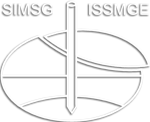Proposed sector-specific inventorying and ranking of potentially contaminated sites: The case of the Armed Forces in Greece
Proposed sector-specific inventorying and ranking of potentially contaminated sites: The case of the Armed Forces in Greece
Considering Greeces lack of specific regulations for polluted land as an opportunity for the Ministry of Defense (MoD), the project reported herein started with the following question: how can the MoD develop a custom-made methodology to (A) put together an inventory of its own potentially contaminated sites and (B) identify priority sites for further study? In order to tackle the logistical aspects of the question and ensure the fit-for-purpose of the inventory, it was decided to consider all types of active military units. Site information was collected through a questionnaire developed specifically for the installations of the Greek Armed Forces, which was to be filled by the environmental protection officer of each military unit. The questionnaire includes nine screening indicators grouped in three categories: contaminant, migration potential and receptor. Each indicator was evaluated with a set of possible answers-parameters and each parameter was assigned a grade (from zero to 18), resulting in a total maximum site score of 100. The questionnaire was initially tested at two sites, phrasing improvements were made and the final questionnaire was piloted at three more sites. The final scores of the five sites ranged from 59 to 90, i.e. the assigned grades appear to be capable of differentiating sites in terms of high or medium pollution potential, supporting thus the applied promise of the methodology.
G. Tzannes; Marina Pantazidou
9th International Congress on Environmental Geotechnics (ICEG2023)
Characterisation, Remediation and Management of Contaminated Sites and Wastes
Contaminant Transport, Geoenvironmental Engineering
https://doi.org/10.53243/ICEG2023-65
